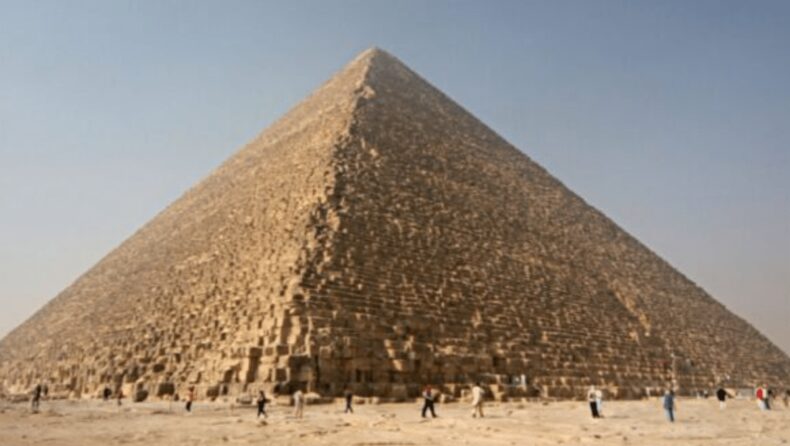- Mr. Ahmed Issa, Minister of Tourism and antiquities of Egypt, commented that the passage is more than two meters wide and nine meters long.
- The researchers found a secret entrance inside Egypt’s Great Pyramid on Thursday, part of a seven-year collaborative research.
According to Egyptian antiquities officials, a secret corridor is discovered near the primary gate of the Great Pyramid of Giza, and it will help in future excavations. The Scan Pyramids project has utilized non-invasive technologies to look within the structure since 2015. The researchers use infrared thermography, 3D simulations, and cosmic-ray imaging for analysis. It belongs to the Seven Wonders of the Ancient World.
The Great Pyramid of Giza
According to a publication in Nature, the discovery will provide a glimpse of the building. The purpose of the limestone building with a pitched roof in front of the corridor is under investigation. About 2560 BC, Pharaoh Khufu, often known as Cheops, constructed the Great Pyramid as a massive mausoleum. The Giza was the world’s tallest building before Eiffel Tower. In 1889, the height of the Pyramid was 146 meters; now, it is only 139 meters.
Mr. Mostafa Waziri, the head of Egypt’s Supreme Council of Antiquities, has commented that the unfinished passage was likely constructed to rebalance the Pyramid’s weight around the main entrance, which is presently used by tourists and is situated approximately seven meters away. He further commented that there might be another as-of-yet undiscovered chamber or space. It is also believed that five rooms above the king’s burial space were constructed to disperse the weight of the gigantic structure.

The Analytical Process
Mainly, Cosmic-ray muon radiography was used to find the corridor. Photos of the corridor were reconstructed by sending a 6mm-thick endoscopic device procedure from Japan through a small crack in the Pyramid’s stones. The Great Pyramid is the first significant inner structure identified since the 19th century. According to Scan researchers, who reported their discovery in 2017, It has a void of at least 30 meters long.
Researchers have used muon rays to photograph ancient structures. It is well known that cosmic rays consistently produce these particles. They were utilized in the 1950s by an engineer named E.P. George to measure a tunnel in Australia. But Nobel Prize-winning physicist Luis Alvarez, who worked with Egyptian archaeologists, first popularised muon imaging by employing it to look for secret rooms within the main building at Giza. Although it appeared to work in theory, they could not locate any secret chambers.

Muon imaging comes in numerous systems, although the researchers commonly use gas-filled chambers. As muons race through the gas, they hit the gas particles and generate a distinctive flash of light that is recorded by a detector and used to determine the energy and trajectory of the particle. It is comparable to ground-penetrating radar or X-ray imaging, but instead, it uses naturally occurring high-energy muons instead of radio waves or X-rays. The ability to visualize thick, dense materials, such as the stones needed to construct them, is made feasible by increased energy. Muons are more frequently blocked when an item is thick, leaving a distinct shadow. The final image would reveal hidden chambers because they blocked fewer particles.
At a press briefing in front of the Pyramid, The head of the antiquities department informed reporters, “We are planning on continuing the analysis, so we will see what we can do to discover the underneath of passage it or simply through the end of this passage.













